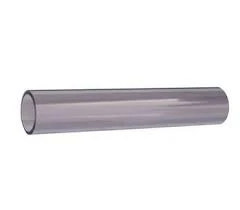Dec . 09, 2024 16:39 Back to list
Exploring the Benefits of PVC and PPR Pipes and Fittings for Modern Plumbing Solutions
Understanding PVC and PPR Pipes and Fittings
In the world of plumbing and construction, the choice of materials is crucial to ensure durability, efficiency, and cost-effectiveness. Among the myriad of materials available, PVC (Polyvinyl Chloride) and PPR (Polypropylene Random Copolymer) pipes have emerged as highly popular options for various applications, particularly in water supply systems. This article delves into the characteristics, benefits, and applications of PVC and PPR pipes and fittings.
What are PVC and PPR Pipes?
PVC pipes are made from synthetic plastic polymer, known for their lightweight and robust properties. They are commonly used in various construction projects, including residential plumbing, drainage systems, and irrigation. PPR pipes, on the other hand, are made from a type of polypropylene that is designed for hot and cold water applications. They have become increasingly preferred in plumbing due to their excellent thermal stability and chemical resistance.
Properties of PVC and PPR Pipes
1. Durability Both PVC and PPR pipes are known for their long service life. PVC pipes can last for over 50 years under the right conditions, making them an excellent investment for developers and homeowners alike. PPR pipes, similarly, can withstand extreme conditions, resisting degradation and corrosion.
2. Lightweight PVC pipes are incredibly lightweight, making them easy to transport and install. This feature not only reduces labor costs but also makes handling and installation more convenient for workers.
3. Chemical Resistance PVC pipes are resistant to a wide range of chemicals and substances, making them suitable for various industrial applications. PPR pipes also excel in this area, showing resistance to most acids, bases, and solvents, making them ideal for a variety of plumbing needs.
4. Thermal Insulation PPR pipes offer excellent thermal insulation due to their low thermal conductivity. This translates to less heat loss in hot water applications, fostering energy efficiency.
pvc ppr pipes and fittings

Advantages of Using PVC and PPR Pipes
1. Cost-Effectiveness PVC pipes are generally more affordable than metal alternatives, which can lead to substantial savings on both material costs and labor during installation. PPR pipes, while slightly more expensive than PVC, still remain a cost-effective option due to their longevity and reduced maintenance needs.
2. Easy Installation The lightweight nature of both pipe types contributes to easier handling and installation. Moreover, fittings for both PVC and PPR are widely available, and their compatibility with various existing plumbing systems adds to their appeal.
3. Low Maintenance Due to their resistance to corrosion and chemical deterioration, PVC and PPR pipes require minimal maintenance. Homeowners and businesses can enjoy peace of mind knowing that their plumbing systems are less likely to develop leaks and other issues.
4. Versatility Both pipes are versatile, serving a variety of applications, from water supply and drainage to irrigation and industrial use. PVC fittings are available in numerous shapes and sizes, allowing for flexible plumbing configurations. PPR fittings can handle high-pressure applications due to their robust construction.
Applications of PVC and PPR Pipes
PVC pipes are commonly used in residential and commercial plumbing, sewage systems, and irrigation. They are also found in electrical conduits and various industrial applications. PPR pipes, with their ability to handle hot water, are an excellent choice for both domestic hot water systems and radiant heating systems. Additionally, they are frequently used in hospitals, laboratories, and food processing industries due to their hygienic properties and resistance to bacterial growth.
Conclusion
When it comes to selecting pipes and fittings for plumbing and construction, both PVC and PPR pipes offer compelling advantages. Their durability, cost-effectiveness, and versatility make them indispensable in modern infrastructure. By understanding the attributes of these materials, builders, plumbers, and homeowners can make informed decisions that enhance the longevity and efficiency of their piping systems. Whether opting for PVC or PPR, both options ensure reliable performance for various applications, contributing to sustainable and efficient construction practices.
-
HDPE Natural Sheet: Durable, Food-Grade & Versatile Plastic Solutions
NewsAug.27,2025
-
Durable Glossy PVC Rigid Sheet | Premium High-Shine Panels
NewsAug.26,2025
-
Durable PP Rigid Sheet: Lightweight, Chemical Resistant Solutions
NewsAug.21,2025
-
PVC Grey Sheet for Extraction: Chemical Resistant & Durable
NewsAug.19,2025
-
Durable PVC Pipe Fittings for Plumbing & Irrigation Needs
NewsAug.18,2025
-
HDPE Steel Belt Reinforced Spiral Corrugated Pipe | High Strength
NewsAug.17,2025

